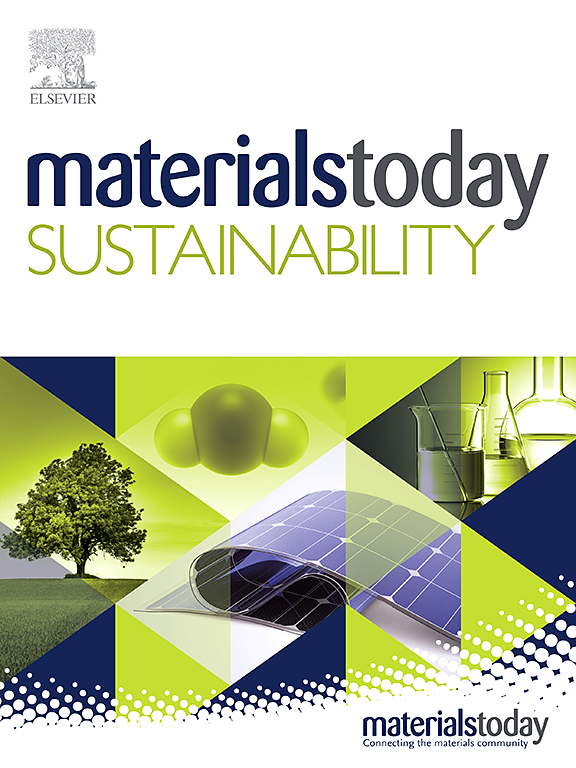粗粒度的分子研究揭示了水合物中增加二氧化碳储存的潜力
IF 7.1
3区 材料科学
Q1 GREEN & SUSTAINABLE SCIENCE & TECHNOLOGY
引用次数: 0
摘要
二氧化碳(CO2)占所有温室气体的 76%,对遏制全球变暖的关注加速了捕获和储存二氧化碳的研究。考虑到以水合物形式捕获、储存和运输二氧化碳的潜力,一些研究人员对气体水合物的形成和解离进行了分子动力学(MD)和实验研究。虽然这些研究说明了气体水合物的成核和生长等基本机制,但我们发现,这些研究的长度尺度较小,只能研究小于模拟域尺寸的过程。为了解决这一局限性,我们在比以往研究大两个数量级的系统中进行了二氧化碳水合物生长的 MD 研究。这使我们首次观察到二氧化碳纳米气泡在生长的固体水合物中的捕获。我们计算了被捕获纳米气泡中的二氧化碳密度,发现它是固体水合物中相应密度的 2.5 倍,这表明气体水合物中的二氧化碳(和其他气体)储存量有可能大幅增加。二氧化碳纳米气泡比之前大多数二氧化碳水合物 MD 模拟所用的模拟域都要大,这表明了这些大规模研究的重要性。本文章由计算机程序翻译,如有差异,请以英文原文为准。

Coarse-grained molecular studies reveal potential for increased CO2 storage in hydrates
The interest in curtailing global warming has accelerated research in capturing and storing carbon dioxide (CO), which accounts for 76% of all greenhouse gases. Considering the potential of capturing, storing, and transporting CO as hydrates, several researchers have performed molecular dynamics (MD) and experimental studies of the formation and dissociation of gas hydrates. Although these studies have illustrated essential mechanisms, such as the nucleation and growth of gas hydrates, we show that the small length scales of these studies limit them to processes smaller than the sizes of the domain simulated. To address this limitation, we performed MD studies of CO hydrate growth in systems that are two orders of magnitude larger than in previous studies. This allowed us to observe the trapping of CO nanobubbles within a growing solid hydrate for the first time. We computed the CO density in the trapped nanobubble and observed that it was 2.5 times its corresponding density in the solid hydrate, which indicates the potential to significantly increase the storage of CO (and other gases) in gas hydrates. The CO nanobubbles were bigger than the simulation domains used in most previous MD simulations of CO hydrates, indicating the importance of these large-scale studies.
求助全文
通过发布文献求助,成功后即可免费获取论文全文。
去求助
来源期刊

Materials Today Sustainability
Multiple-
CiteScore
5.80
自引率
6.40%
发文量
174
审稿时长
32 days
期刊介绍:
Materials Today Sustainability is a multi-disciplinary journal covering all aspects of sustainability through materials science.
With a rapidly increasing population with growing demands, materials science has emerged as a critical discipline toward protecting of the environment and ensuring the long term survival of future generations.
 求助内容:
求助内容: 应助结果提醒方式:
应助结果提醒方式:


